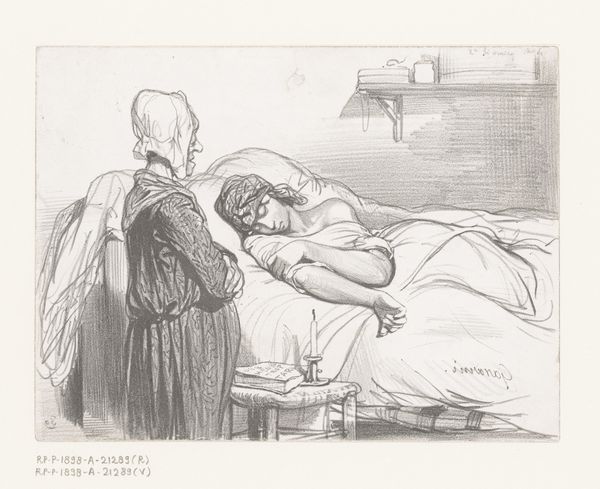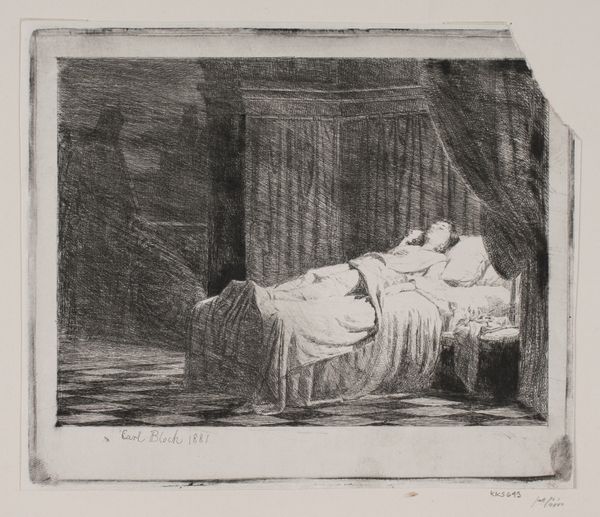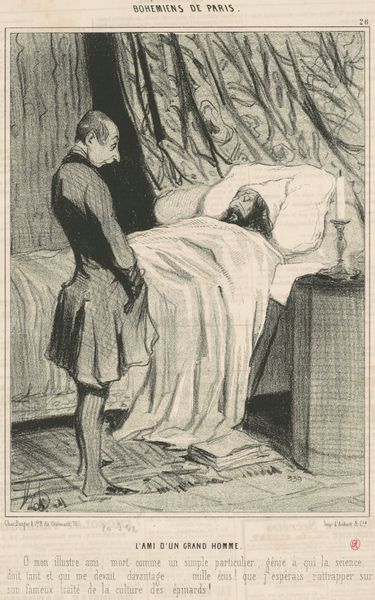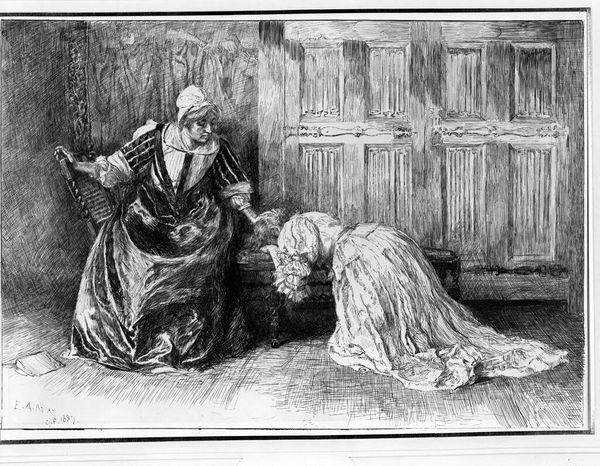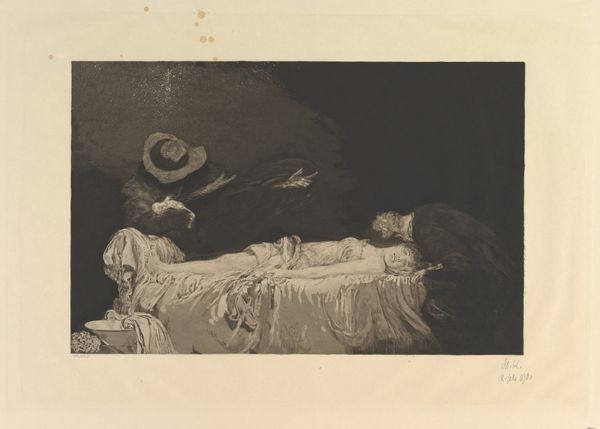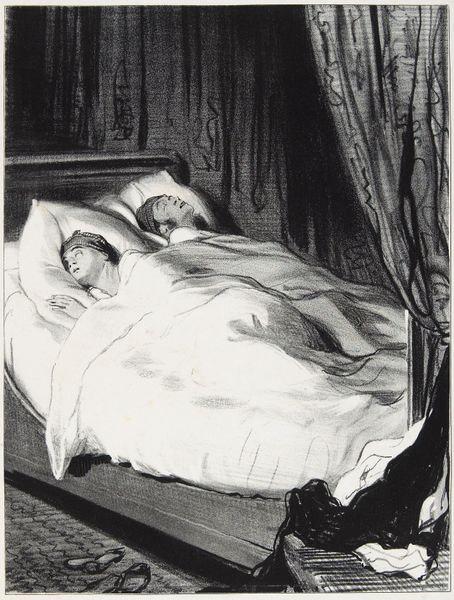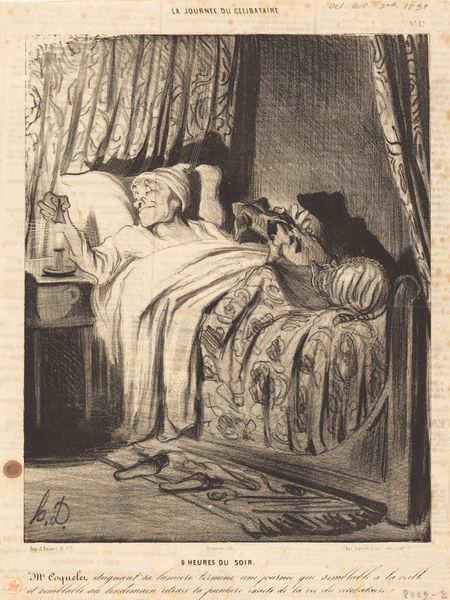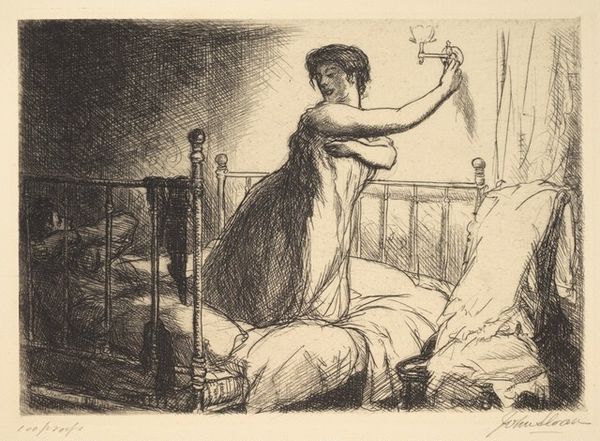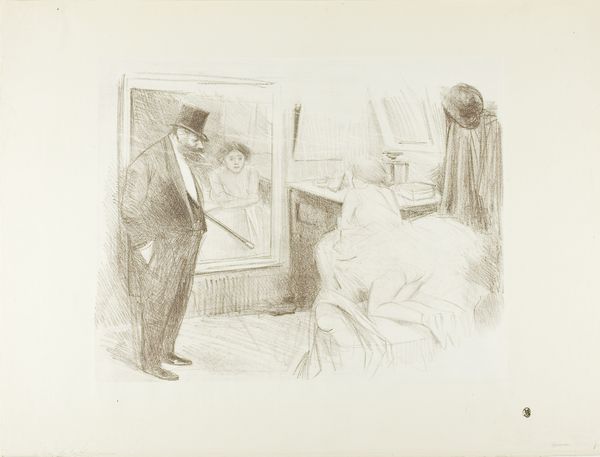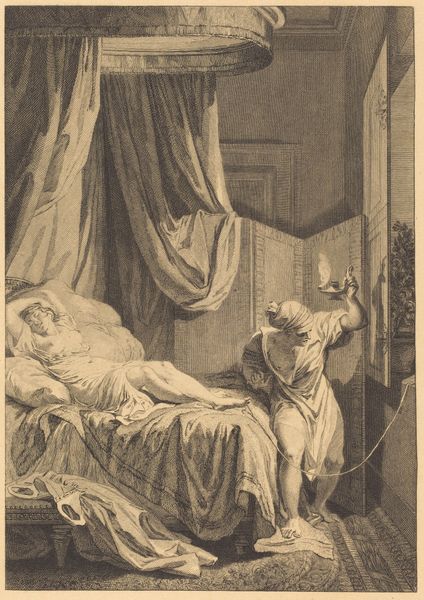
drawing, etching, ink, pen, charcoal
#
drawing
#
narrative-art
#
etching
#
pencil sketch
#
etching
#
charcoal drawing
#
ink
#
linocut print
#
pen-ink sketch
#
pen
#
genre-painting
#
charcoal
Dimensions: 10 1/16 x 14 1/8 in. (25.6 x 35.9 cm)
Copyright: Public Domain
Curator: Edwin Austin Abbey, active between 1852 and 1911, created this compelling image. "Entrance of the Serving Maid," a narrative drawing, combines pen, ink, and charcoal. Editor: It’s got this somber, quiet mood about it, like you're peering into a very private moment. It reminds me a bit of those old black-and-white movies. Curator: Absolutely. Note how Abbey uses line work to define both shadow and form. The stark contrast emphasizes the spatial dynamics—a servant gazing towards a mistress or employer figure asleep in bed. What does this suggest to you? Editor: Well, it’s loaded, isn’t it? There's this power dynamic just hanging in the air, this tension of the have and have-not. The maid seems trapped in a watchful position. Does she feel sympathy or resentment, you wonder? It hits a nerve, makes you feel a little uncomfortable, yet compelled. Curator: It's difficult to ignore how genre painting of this period tends to highlight such class disparity and gendered labor. The maid's 'entrance' isn't just physical; it also suggests an intrusion on a private, privileged world, doesn't it? Her posture – head covering and all – speaks of her subjugated social role. Editor: You’re right. It’s more than just a scene; it's a statement. I keep thinking about how meticulously Abbey rendered the folds in her dress and yet how he also lets the linework blur together to cast shadows throughout the space. Is she frozen? Does she belong to this place? Is the boundary blurred or impenetrable? Curator: The etching quality amplifies this ambiguity; each stroke invites interpretation and speaks volumes about the unseen emotional realities of its time. This narrative encapsulates how labor and social stratification were understood, and often reinforced through art. Editor: Exactly. You start wondering about the untold stories within these silent black lines – the servant's life, dreams, and the intricate dance of daily domestic labor in the face of a more restful life nearby. I appreciate art that lingers long after you've turned away from it. Curator: And how art, as we continue to ask pertinent questions and reflect upon historical relationships, still manages to offer new insights into the power structures shaping today's society.
Comments
No comments
Be the first to comment and join the conversation on the ultimate creative platform.

